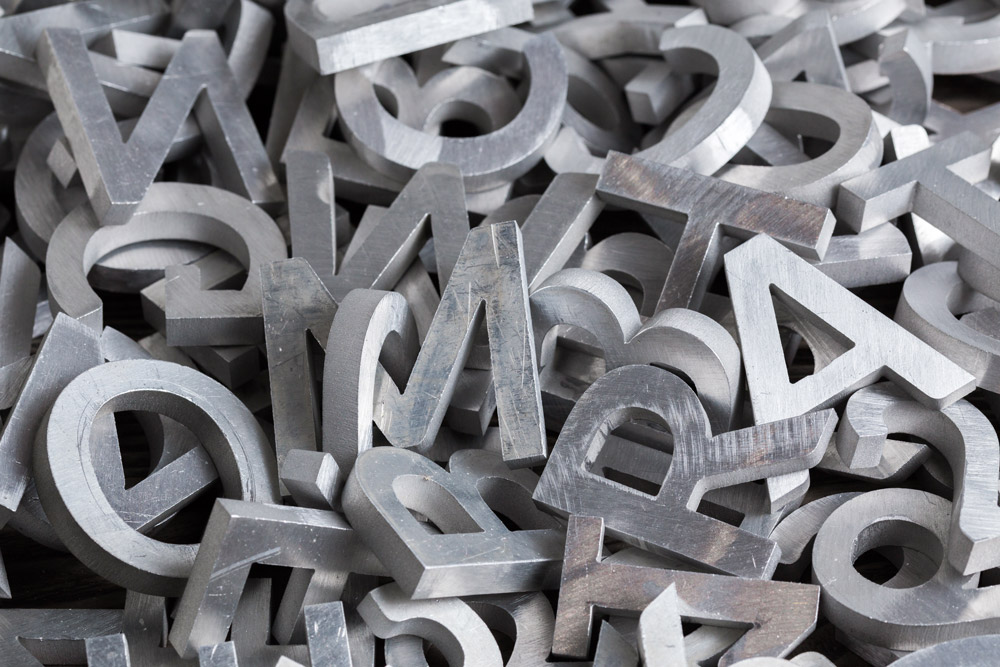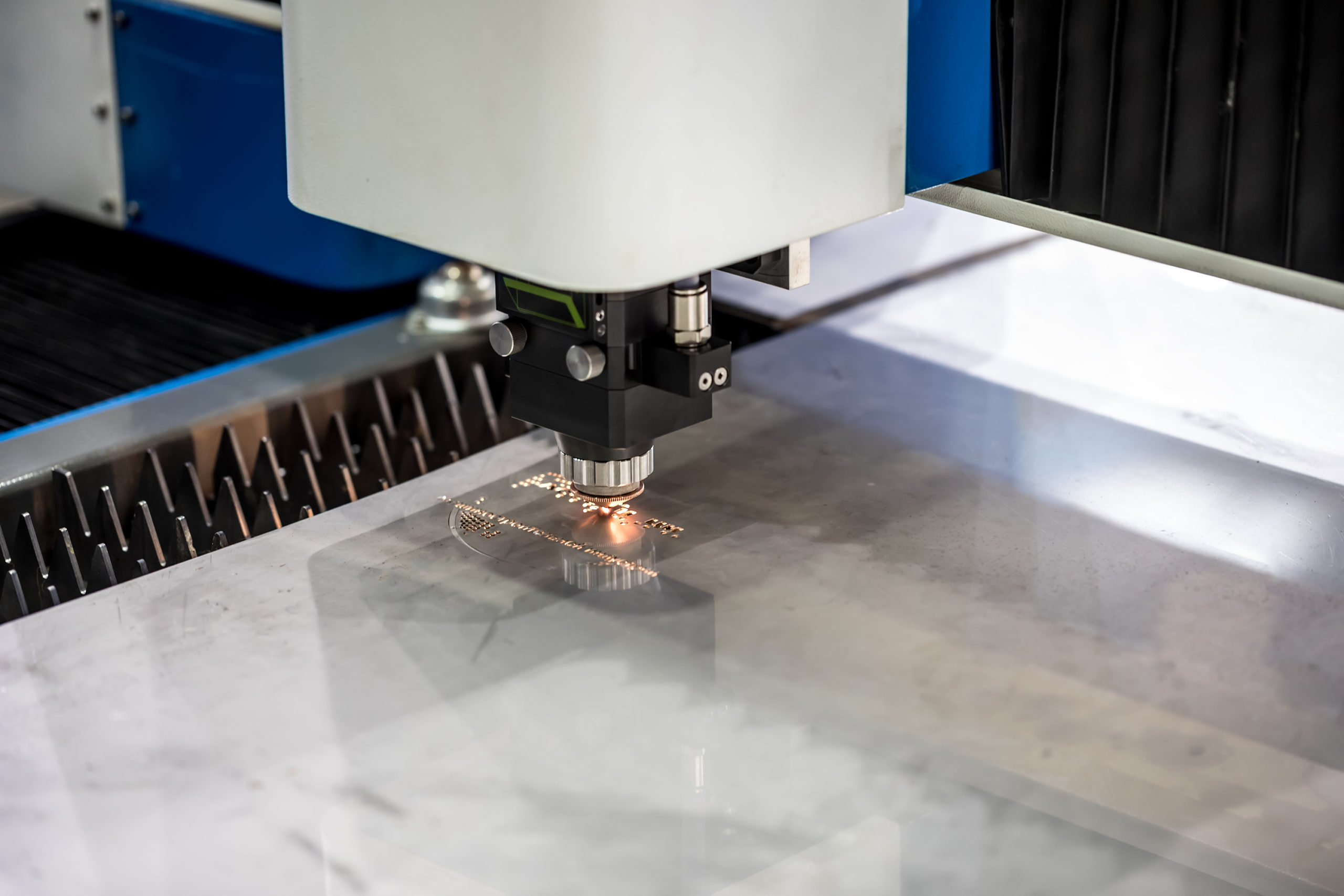Laser cutting uses CNC technology to direct a high-power laser that vaporizes materials and leaves behind a cut edge. There are different types of laser cutting, two of which are fiber laser and CO2 laser cutting technologies. While both of these methods operate in the same basic way, they are different and have unique advantages and disadvantages in this industry.
Let’s examine the comparison between the fiber laser vs. CO2 laser.

Fiber Lasers
Fiber lasers work by first creating light in the laser diodes. As electrical current flows through the laser diodes, photons (light) are released and this resulting light is pumped through a fiber optic cable. The fiber optic cable focuses this light to an extremely small diameter, highly-focused beam of light. This laser beam, set to a specific wavelength and shape, is used to make incredibly sharp cuts and markings.
CO2 Lasers
The CO2 laser is a gas laser. Light is produced when electricity runs through a gas-filled tube. (The CO2 laser gets its name from this gas, usually a mixture of carbon dioxide, nitrogen, hydrogen, and helium!) Mirrors at both ends of this tube guide the light to the material that is to be cut. These optical mirrors and lenses require regular adjustment, cleaning, and replacement to keep the machine working as intended.
Let’s examine additional factors of both fiber and CO2 lasers that may affect your choice.
Fiber Laser vs. CO2: Speed
When determining which type of laser application will be better for your project, speed and a fast turnaround can be some of the most sought-after advantages. Consider that the speed of a specific cutting job depends on the material used, the thickness of that material, and the complexity of your design.
While both the fiber laser and the CO2 laser are used to cut a variety of materials, it is well-known that the newer and more advanced technology of the fiber laser gives it a speed advantage in many cases. There are no mirrors, lamps, or other parts to replace and no optics to adjust. The fiber laser cutter also uses less energy, does not require “warm-up” before use, and thus can yield three to four times greater throughput than CO2 laser cutters.
Our 12000 KW Fiber Laser Machine is equipped to take on large- and small-scale projects, with full CAD/CAM capabilities. Contact us today for pricing and we’ll be happy to provide you with a quote and the estimated timeframe to complete your work.
The fiber laser cutter also uses less energy, does not require “warm-up” before use, and thus can yield three to four times greater throughput than CO2 laser cutters.

Fiber Laser vs. CO2: Materials Cut
Both fiber lasers and CO2 lasers can cut materials like wood, some plastics, paper, and cork. However, if your project is being cut from metals like aluminum, copper, brass, or steel, a CO2 laser should not be used. Fiber laser cutting is a better and much more safe alternative to CO2 laser cutting for these shiny, reflective metals. Why? The fiber laser beam is more readily absorbed by the material vs. reflected off of the material. Too much reflected light can not only be harmful, but decreases the efficiency of the cutting machine, takes more time and effort to cut, and negatively affects the optics of your piece.
What materials can a fiber laser cut? Fiber lasers are good for cutting ferrous and non-ferrous metals like stainless steel, copper, aluminum, carbon steel, alloy steel, and other metals which absorb the fiber laser beam easier than they do a CO2 beam. For this reason, fiber lasers are superior in cutting reflective metals compared to other methods. They can also effectively cut nonmetals like wood, glass, paper and cardboards, some plastics, textiles, cork, etc. Another benefit of the fiber laser is the capability to cut thin materials much faster than the CO2 laser.
Can a fiber laser cut plastic? Some plastics may be easily cut with the fiber laser. Examples include acrylics, PMMA, Polyoxymethylene, and thin PTFE (Teflon), and polycarbonate. However, you should consult a professional before cutting plastics, polymers, and composites. Plastics like thick polycarbonate and HDPE are not safe to cut and you run the risk of emitting toxic fumes, melting the material, or the material catching fire in the workspace.
What can I cut with a CO2 laser? CO2 lasers may be used to cut non-metals like wood, paper, rubber and some plastics. CO2 lasers are capable of creating a smooth cutting edge on some thick materials greater than 25 mm. However, using a fiber laser is your best choice for reflective metals like aluminum, brass, etc.
Engraving
Both a fiber laser cutter and CO2 laser cutter may have engraving capabilities. However, the same material restrictions above apply to engraving as well as cutting. If you’re engraving metals, the fiber laser has an obvious advantage when it comes to materials used. Additionally, the fiber laser’s small focal diameter (better focused beam) is more suited to make high contrast markings like engraving and etching.
Fiber lasers can engrave stone, brick, marble, granite, some types of glass, steel, aluminum, brass, platinum, etc. It is wise to consult a laser cutting professional before engraving and to get your materials professionally engraved.

Fiber Laser vs. CO2: Cost
Since CO2 laser cutting is older technology with a higher cost to operate and maintain, you may find that reflected in the price of your cut materials. With both of these cutting methods, many factors will determine the price of your project, including size and material.
While fiber laser technology is certainly not a cheap thing, you’ll find that the quick turnaround and superior cut quality are well worth your investment. At McKiney Manufacturing, we provide competitive rates to fiber laser cut and engrave your custom parts and projects. Reach out for a quote today.
Fiber Laser vs. CO2: Which is better for your project?
After weighing the capabilities of both fiber laser and CO2 laser cutters, you can determine which will be more advantageous for you or your business.
Whether you’re cutting or engraving with a laser, the experts at McKiney Manufacturing are ready and willing to assist you with all aspects of your project. Our mission is to exceed your expectations.
McKiney Manufacturing provides CNC fiber laser sheet cutting and fiber laser tube cutting services to manufacturers in Nebraska, the Front Range, and throughout the United States. Give us a call today for a consultation or a quote on custom laser-cut materials.

